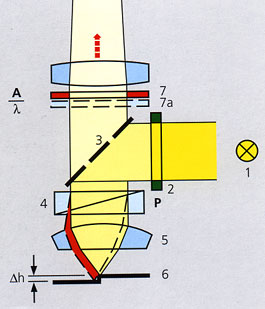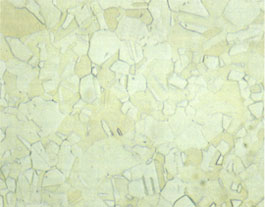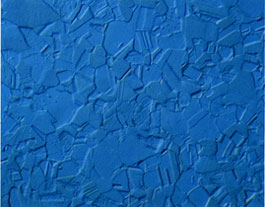Differential Interference Contrast (DIC)
DIC in incident light
This method, an extension of polarization contrast, is suitable for the visualization of even minute differences in height on surfaces. A birefringent prism (4) is used which splits the polarized light beam into two partial beams on its way to the sample. These two partial beams strike the sample (6) with lateral displacement from each other. If the surface is completely flat, nothing will happen. However, if there is a small step between the partial rays, one of the two beams has to travel along a path which is 2 delta h longer and receives this path difference. Once the partial beams have returned via DIC prism (4) and analyzer (7), they display the same direction of vibration again – due to the


The structure of this brass specimen can only be seen very faintly in incident-light brightfield.

The same sample surface appears to have three-dimensional relief in DIC.